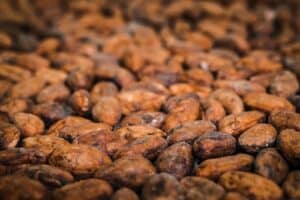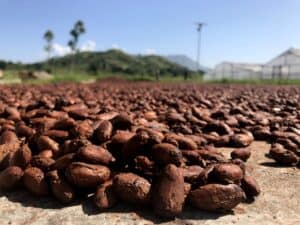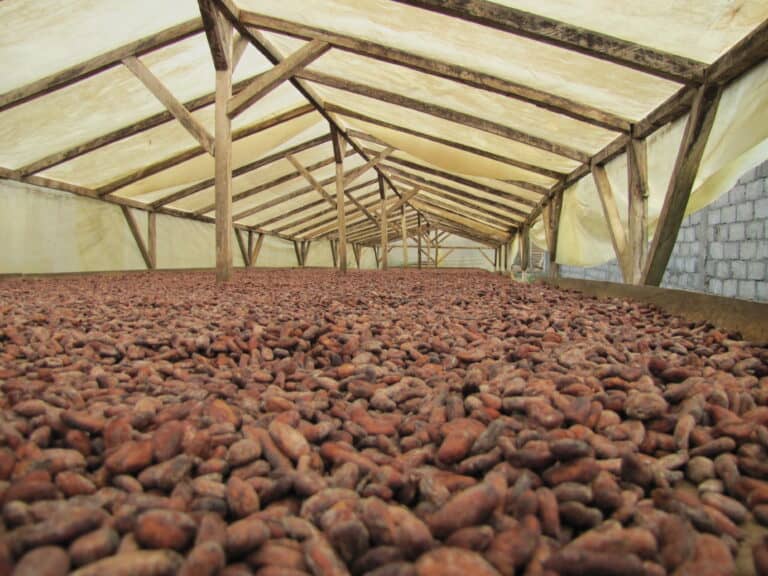Diving into the world of cocoa processing, you’ll quickly find that the drying stage is crucial. It’s not just about reducing moisture; it’s about preserving the bean’s quality, flavor, and ultimately, the chocolate’s character. Among the various cocoa bean drying methods, each has its unique approach and impact on the final product.
From the warmth of the sun to the precision of modern technology, drying cocoa beans is an art as much as it is a science. Whether it’s open sun, solar oven, microwave, or freeze drying, the method chosen can significantly influence the drying properties and quality of the beans. Let’s explore how these methods compare and what makes each one stand out in the quest for perfect cocoa beans.
Open Sun Drying Method

The open sun drying method is the most traditional approach used by cocoa farmers worldwide. It’s a critical step in the cocoa bean drying process that hinges directly on the weather. When you spread cocoa beans, freshly fermented and brimming with moisture, under the direct sunlight on plastic sheets, concrete floors, or raised wooden mats, you’re engaging in a practice that dates back centuries. This method relies heavily on natural solar radiation and air movement to evaporate moisture from the beans effectively. The drying period varies but typically spans several days, during which the beans are regularly turned by hand to ensure even drying and prevent defects.
One of the key benefits of sun drying is its minimal energy consumption compared to artificial drying methods such as convection dryers. However, it’s not without its challenges. Cocoa beans dried under the sun are vulnerable to sudden weather changes, which can adversely affect their quality. Moreover, the exposure to direct sunlight and saturated air can lead to a wide variation in the final bean quality, influencing everything from the beans’ flavor profile to their chemical quality attributes crucial for premium chocolate quality.
Despite these challenges, the open sun drying method remains popular among cocoa producers for its simplicity and low cost. It plays a vital role in determining the final moisture content of cocoa beans, a crucial factor for preventing mouldy beans and ensuring the beans are stored properly. By understanding the dynamics of the drying process, including the critical role of fermentation and drying in the cocoa beans value chain, you can appreciate the art and science behind producing quality cocoa for the global supply chain. This traditional method, while labor-intensive, underscores a connection to the natural processes that underpin high-quality cocoa production, central to the craftsmanship of chocolate makers.
Solar Oven Drying Method

When diving into the complex world of cocoa bean drying methods, the solar oven technique stands out for its innovative approach. Unlike the traditional cacao drying methods under direct sunlight, the solar oven utilizes a controlled environment that can significantly improve cocoa bean quality by maintaining a consistent drying temperature. This method incorporates a heating chamber where cocoa beans are placed on trays and the drying process takes place through natural convection, facilitated by solar energy. This technique aims to reduce moisture content optimally, ensuring that dry cocoa beans are ready for the next stages of cocoa processing.
The efficiency of solar oven drying lies in its ability to minimize energy consumption while maintaining bean quality. Since the drying process is powered by solar energy, it reduces the reliance on electricity or fossil fuels, making it an eco-friendly choice for cocoa producers. Additionally, the controlled drying environment helps prevent fermented cocoa beans from becoming mouldy beans or defective beans, which are common challenges in sun drying methods. By keeping the dried beans away from direct contact with plastic sheets or banana leaves, it also ensures that the beans are not exposed to contaminants that could affect the chocolate quality.
Understanding the thin layer drying kinetics within a solar oven is crucial for optimizing the drying period and achieving optimal cocoa bean drying. The dynamics involve adjusting the solar dryers to ensure that dried cocoa beans in this method reach the desired moisture content without compromising their chemical quality attributes. This process is essential for sustaining the high standards of cocoa quality demanded in the global supply and by chocolate makers. Through this method, farmers and industrial processors can produce quality cocoa that supports the entire cocoa beans value chain, from the cacao tree to the final cocoa butter and cocoa powder products.
Microwave Drying Method

When diving into cocoa bean drying methods, it’s imperative to explore the microwave drying technique, which marks a significant departure from traditional sun-dried or solar drying methods. Unlike the passive nature of sun drying on plastic sheets or solar dryers utilizing direct sunlight, the microwave drying process relies on a more controlled environment. Here, cocoa beans are exposed to microwave energy within a heating chamber, efficiently reducing the moisture content of the beans without the dependency on external weather conditions. This method not only promises a uniform drying process but also mitigates the risk of mold and defective beans that often compromise cocoa bean quality in traditional drying settings.
One of the most notable advantages of using microwave drying for cocoa beans is the significant reduction in drying time. Compared to the lengthy drying periods associated with natural convection solar dryers or laying beans under direct sunlight, the microwave method accelerates the drying process, allowing cocoa producers to move swiftly from cocoa pod harvesting to the fermentation process and eventually, dry cocoa beans ready for the market. This efficiency not only enhances the cocoa beans value chain but also supports the quality cocoa production crucial for cocoa powder and cocoa butter industries.
However, it’s essential to keep in mind the need for meticulous control over drying temperature and energy consumption during the microwave drying process. Excessive heat can lead to beans tasting acidic or developing unwanted flavors, which ultimately affects chocolate quality. Therefore, optimizing these parameters is key to achieving optimal cocoa bean drying, ensuring the cocoa quality meets the demands of chocolate makers globally. Through careful process adjustments, microwave drying has the potential to become a pivotal method in the drying of cocoa beans, aligning with both farm and industrial processing standards to uphold the integrity of cocoa production worldwide.
Freeze Drying Method
When exploring cocoa bean drying methods, the freeze-drying technique emerges as a cutting-edge alternative that contrasts sharply with traditional methods like sun drying and solar dryers. Unlike the conventional approaches that often rely on direct sunlight or saturated air, the freeze-drying process involves freezing the beans and then reducing the surrounding pressure to allow the frozen water in the beans to sublimate directly from ice to vapor. This method is particularly advantageous for preserving the chemical quality attributes of the cocoa beans, ensuring that the cocoa powder and cocoa butter derived from these beans maintain their premium quality.
Freeze drying, also known as lyophilization, aims to minimize the moisture content in cocoa beans without compromising their flavor or texture. By carefully controlling the drying temperature, the process effectively prevents the development of mouldy beans, a common issue with beans that ferment too long or are dried improperly during the cocoa fermentation process. This method is highly regarded for producing quality cocoa by effectively retaining the beans’ inherent flavors and aromas, which are crucial for high-end chocolate makers. Moreover, freeze drying offers a consistent drying environment, eliminating the quality variation often seen in beans dried using traditional or artificial drying methods.
In the context of cocoa production, implementing freeze drying could revolutionize the cocoa beans value chain, offering cocoa farmers and chocolate manufacturers a reliable way to enhance bean quality. Although it might require a higher energy consumption compared to natural convection solar dryer, the investment in freeze drying technology could be justified by the superior quality of the final product. This method’s precision and efficiency align with the growing demand for high-quality ingredients in chocolate quality, essentially supporting the cocoa sector and its stakeholders across the globe.
Wrapping up: Cocoa Bean Drying Methods Explored
Exploring freeze drying as a novel approach to cocoa bean preservation marks a significant leap forward for the chocolate industry. This method not only promises to maintain the exquisite flavors that connoisseurs crave but also addresses critical challenges like mold prevention and moisture reduction. As you seek out the finest ingredients for your chocolate creations, consider the impact of freeze drying on bean quality. Its potential to transform the cocoa value chain is immense, offering a path to superior chocolate products. Embrace this innovative technique and watch as it elevates the standard for chocolate production worldwide.
Other suggested articles:
